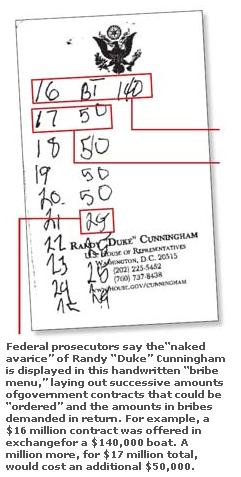Questions on the assignment?
Note: the term is cosponsor, not co-sign.
For next time:
- Davidson, ch. 15
- Thurber, ch. 9.
Distributive Policies (Davidson, 410-412)
Earmarks and scandal (Davidson 411)

John Hudak at Brookings:
Earmarks and scandal (Davidson 411)

John Hudak at Brookings:
The removal of congressional earmarking does not make earmarking going away. It simply transfers that power and that practice from the legislative branch to the executive branch. Presidents—and their appointees—engage in pork-barrel politicking (earmarking) in the same way Congress does. Reforming the process in Congress by curtailing the practice of earmarking simply shifts that power more explicitly to a president and a cadre of unelected bureaucrats in government. Eliminating earmarking is a serious abdication of power by Congress which empowers a branch of government beyond what the Founders intended.Regulatory Politics
The cost of regulation (See Thurber, pp. 250-251)
Redistributive Politics
Social Insurance (Theodore Marmor):
Social insurance, like commercial insurance, is about protection against financial risk. It is “insurance” in the sense that people contribute to a fund to protect themselves against unpredictable financial risks. These include outliving one’s savings in old age, the early death of a breadwinner, the onset of a disability that makes work difficult if not impossible, the high costs of acute illness, involuntary unemployment, and work-related injury. Yet unlike with commercial insurance, contributions are not prices in a market and thus do not depend on the contributor’s risk profile (unless commercial regulations say otherwise, in essence creating “social” insurance through the backdoor). Instead of a contract between an enrollee and an insurer, social insurance is a system of shared protection among the insured, most comparable to mutual insurance in the commercial realm, with contributions made in proportion to one’s market income. In social insurance, the “insurer”—whether a government agency or a corporate body with a joint labor-management board—is the agent of the contributing enrollees. And unlike commercial insurance, the social insurance “contract” mandates participation by law, since otherwise adverse selection would cause its unraveling.Poverty Rate by Age
................Children............65+
1959............26.9.............35.2
1969............13.8.............25.3
1979............16.0.............15.2
1989............19.0.............11.4
1999............16.6.............09.7
2009............20.1.............08.9
2019............14.1.............08.9
Credit Social Security for the decline in elder poverty
See how different the figures would be:


No comments:
Post a Comment